Whether your region requires you to install snow-rated tires during the cold months or you simply want to sport them for added safety, you should know how much a winter tire costs. Many car owners just don’t install winter tires because they believe they’re unaffordable.
While winter tires are typically known to be more expensive, affordable options from growing tire brands like Sailun Tire don’t compromise on the quality and performance drivers expect on the icy roads.
But even the pricer ones are more affordable than your rising insurance premium, likely medical bills, and automotive repairs (not covered in the insurance policy) that you must endure due to an accident in harsh winter conditions.
Here, we will explain the cost of different winter tires and the additional expenses associated with them. If you’re in the market for new winter tires — from value-based to premium — check out our full buying guide here.
Many factors affect the price of winter tires, including brand, type, quality, and size. Since every brand has its own criteria to evaluate the price for its rubber, we would avoid commenting on it. However, we will specifically discuss type, quality and size to give you a fair idea of winter or snow tires.
For a compact car with a famous 205/55R16 size, below are approximate prices.
The three main types of winters you find in the market include studless, studded, and winter performance.
Studdless Tires
For most people, studdless winter tires are a perfect companion in cold conditions. These incorporate biting edges and soft rubber compounds, making them flexible for winter. A standard studdless tire will cost you anywhere between $60 and $550, each.
On average, for a typical compact car, expect to pay around $100-$150 per tire or $400-$600 for all four. For an SUV or light-duty pickup, the price goes up to $200-$400 each or $800-$1,200 for a set of four.
Studded Tires
For extreme weather conditions like freezing rain, sleet and wet ice, studded tires are ideal for a safe driving experience. The metal studs fixed on these tires bite into ice, giving you improved grip and handling. A studded rubber would cost you around $75-$550 or more per tire. For two pairs, you can expect to pay between $300 and $2,200.
There are also studdable options, like the Sailun Iceblazer WST1 studdable performance winter tire trusted by over 1-million drivers in Canada alone, which won’t break the bank yet designed for drivers that demand maximum traction in severe weather conditions.
Sailun IceBlazer WST1 studdable winter tireSailun IceBlazer WST1 studdable winter tireWinter Performance Tires
For guys who do not want to leave their sports cars or performance sedans in their garage in winters, they should put on winter performance tires. They are designed to offer excellent traction at high speeds on wet and dry roads. However, they are not your perfect companion for ice or snow-packed roads. A regular high performer is available at around $100-$500 each or $400-$2,000 for all four.
They are designed to offer excellent traction at high speeds on wet and dry roads. However, they are not your perfect companion for ice or snow-packed roads. A regular high performer is available at around $100-$500 each or $400-$2,000 for all four.
For all the prices we mentioned above, the smaller the size, the lower the cost. However, the price variation also depends on the tire brand, with American tires selling higher than Chinese-made tires.
The prices we shared above are purely for snow tires; they do not include installation charges. For installation, you have two choices. You can either mount the winter rubber on the existing wheels or buy a new set of wheels for all tires.
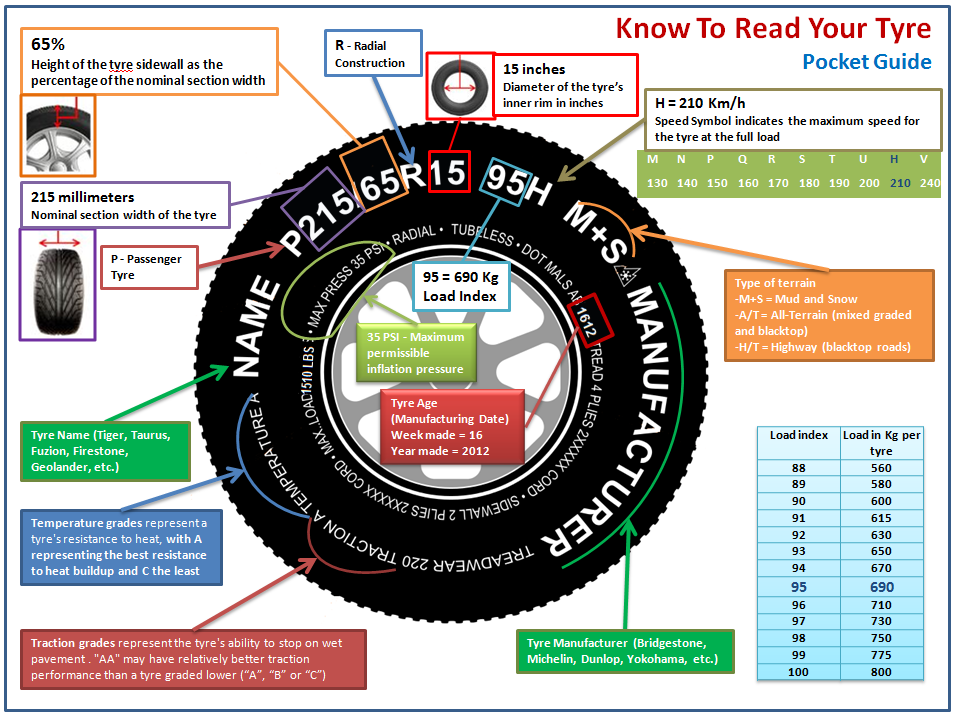 On the other hand, you can buy new wheels for all tires, making it effortless to put on winters when the snow, ice, and slush appear. The four new wheels will set you back $120-$500 or more. You can always try secondhand wheels; they may cost as low as $40-$80.
On the other hand, you can buy new wheels for all tires, making it effortless to put on winters when the snow, ice, and slush appear. The four new wheels will set you back $120-$500 or more. You can always try secondhand wheels; they may cost as low as $40-$80.
 Some retailers provide direct discounts, while others may give you mail-in rebates. You may find them in the shape of gift cards or prepaid cards. The discount amount may vary as per size and model.
Some retailers provide direct discounts, while others may give you mail-in rebates. You may find them in the shape of gift cards or prepaid cards. The discount amount may vary as per size and model. Consumer Reports says that winters tires increase the snow traction by 34%, thus making it easy for you to stop and maneuver the vehicle. These tires actually cut the braking distance by around six feet. That six feet distance is often the gap between you rear-ending a car or drifting into a crossing against carefully coming to a halt without causing a mishap.
Buying the snow tires also enables you to enjoy insurance savings as well as better fuel mileage (if you maintain them well).
Of note, 76% of all Canadians change their all-season tires with snow tires to enjoy better traction and control. Most car owners say that these tires have saved them a possibly dangerous condition.
Related Posts
If you’re looking for a reliable way to drive during the winter you’ve likely heard of tire studs, but they’re not a straightforward solution.
Tire studs have specific conditions in which they work best, others where they pose a risk and best practices for installation, maintenance, and more, all covered below!
Tire studs are small metallic spikes or protrusions fitted onto the tread, usually in the winter, to make driving on slippery roads easier. They come in different sizes and can be fitted depending on the tire’s tread. You can get studded or studdable options according to how handy you are with vehicle parts and accessories.
If you want to learn more about tire studs, including how they work, what size you need, whether or not you can remove/replace them, keep reading!
Tire studs are intended to break through the ice to give the tires more improved grip and traction for better vehicle control on slippery roads.
However, do they actually make a difference?
Well, this depends on the surface on which the vehicle is being driven while the studs are installed.
Their effectiveness is most noticeable when driving on ice as they’re built to break through for grip and traction.
On snow, however, they lose out to tire chains – designed to give your tires more surface to grip the snow – as the surface isn’t rigid enough for the studs to break through and create a solid anchor that stabilizes the vehicle.
Moreover, when the roads they’re being used on are just wet (for example from rain) or completely dry, they actually decrease traction and worsen control; think of it as running on smooth bathroom tiles with football cleats.
Due to their nature, it’s recommended that studs be installed onto thick tires. A good rule of thumb is to avoid tires with single-digit readings on the tread depth gauge.
Experts recommend installing studs on winter tires as they’re usually more readily adapted for them e.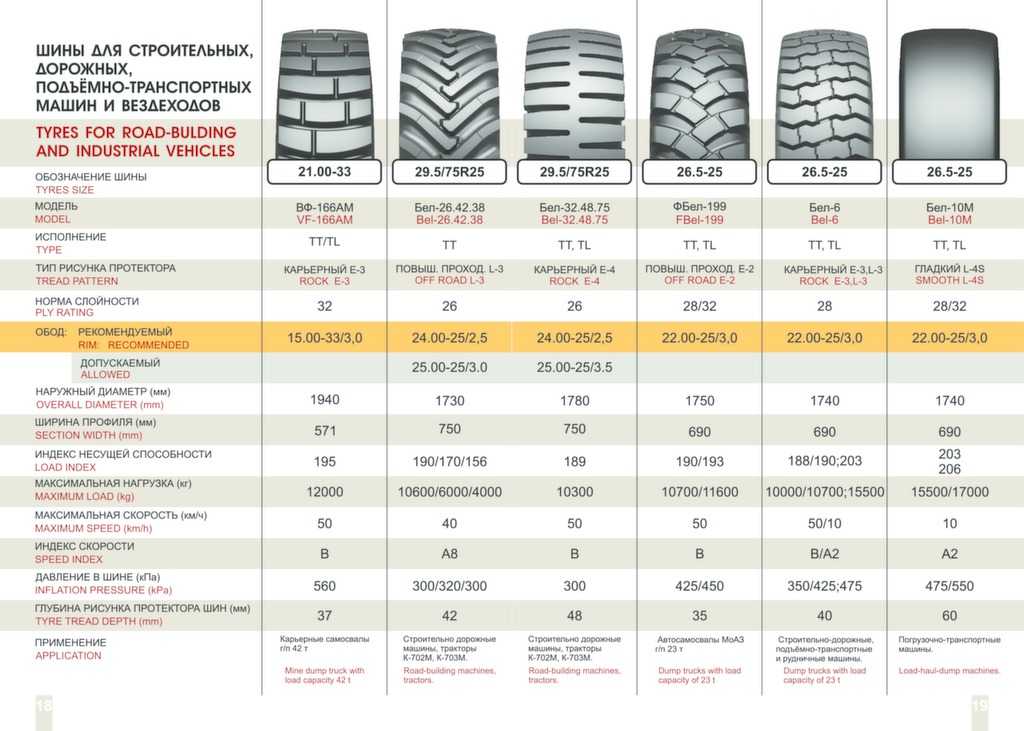 g. by being thicker and more resistant to stiffening in lower temperatures.
g. by being thicker and more resistant to stiffening in lower temperatures.
You can but based on the pointers above, it’s not a good idea to install studs to used tires, as they could have worn to the point where they can’t support them as efficiently and this unreliability could pose a risk.
If you consider yourself an expert, this comes down to the cost of acquiring the tools.
Tire studs are usually sold in packs of 100, ranging from $10 to about $50 depending on size and build material.
To fit them onto the tire, you would need a stun gun or drill – the latter is best for screw studs – both of which cost a few hundred dollars each.
If you’re not experienced enough with this, it’s best to seek professional services in order to avoid causing potentially fatal damage such as accidentally puncturing the tire.
Most auto shops will stud your tires for $15 per tire, and this covers the whole process, including labor and materials.
How long studded tires last depends on factors such as how often they’re used, what conditions they’re used in, the weight of the vehicle, etc.
Most industry professionals and manufacturers, however, recommend that you swap out your studded tires every four seasons.
It is possible to remove studs from your tires right at home using lubricant and a set of pliers, but only after unmounting the wheels from the vehicle first.
Lubing up the studs beforehand ensures that they pop out smoothly without rupturing the surface and causing a puncture.
You should use the same lubricant you use when mounting the wheels so you don’t end up with something that affects the rubber.
A good set of pliers should be used to grab the top of each stud and gently twisting it out instead of pulling.
While it is safe to remove studs from tires, a lot of care should be applied to the process and, in most cases, should be left to a professional.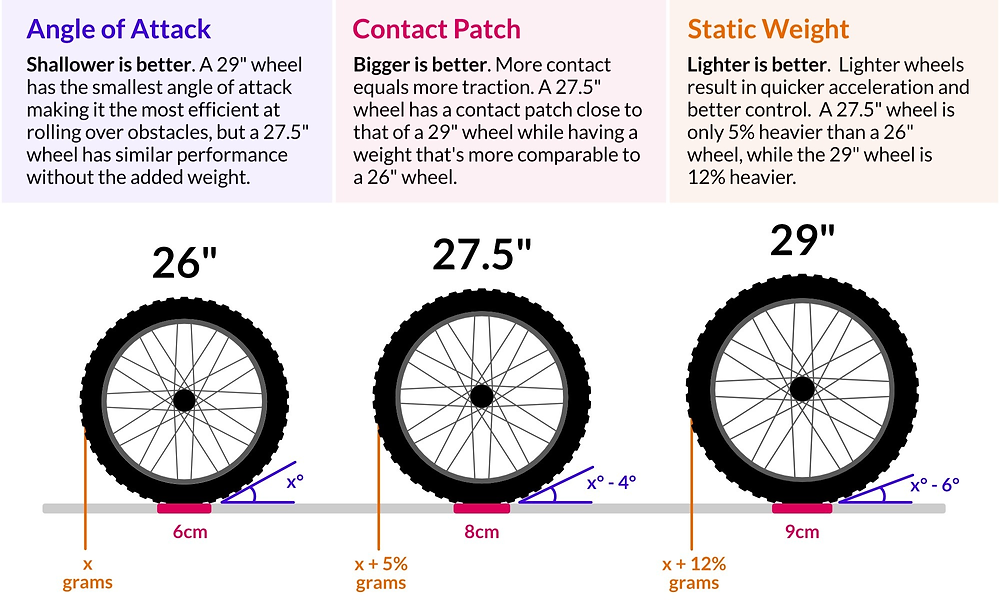
For starters, after removing studs, make sure you check for punctures. Each tire could carry up to 100 studs, so ensure you’re thorough during this step.
Tires whose studs have been removed don’t tend to last as long, especially if they’re winter tires that aren’t adapted for use outside of very low temperatures.
To avoid any unforeseen issues that could result from this process, it is best that you keep the studs on the tires and instead swap the tires themselves out.
This way, you can have a set of wheels for the different seasons and when winter rolls back around, all you have to do is install the dedicated set of wheels.
Tire studs can be replaced but, as discussed above, it’s not a recommended move. Keep one set of studs to one set of tires and only install the tires during the appropriate seasons to ensure you get the most use you can from them.
Most of the tire studs available today have a stem made from steel or aluminum and a head made from tungsten to ensure they last as long as possible.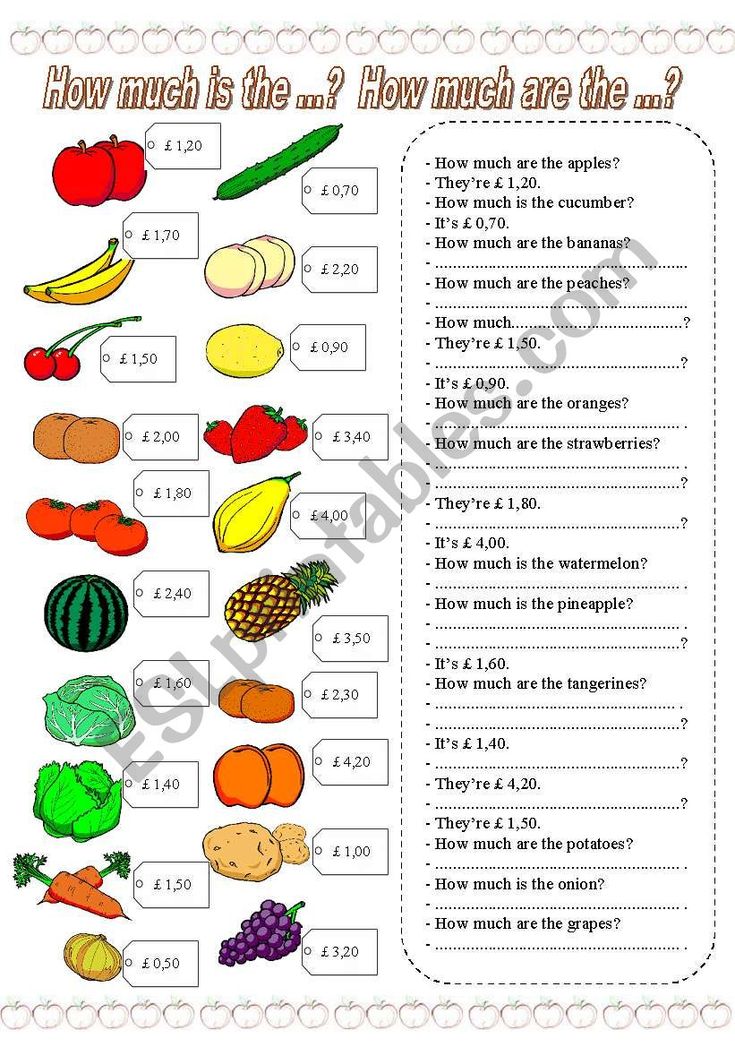
All these materials are highly durable, so if you find that they’re breaking off, it’s more than likely because they’ve been overused. In this case, they should be replaced as soon as possible to avoid motor accidents.
It could also indicate that they’ve been used on the wrong surfaces such as dry asphalt. Keep in mind that they’re meant primarily for icy roads and anything else that sacrifices control could put the driver and passengers in danger.
Tire studs are regulated by region, and it’s important that you check your local laws before installing them.
Most jurisdictions restrict their usage only to certain months within the winter. For example, in the U.S., only six states permit their use throughout the year (New Mexico, Wyoming, Colorado, Kentucky, New Hampshire and Vermont).
Other countries permit their use but with strict regulations of season and vehicle weight, including Denmark, Finland, Russia, France, Great Britain, Switzerland, Sweden and Turkey.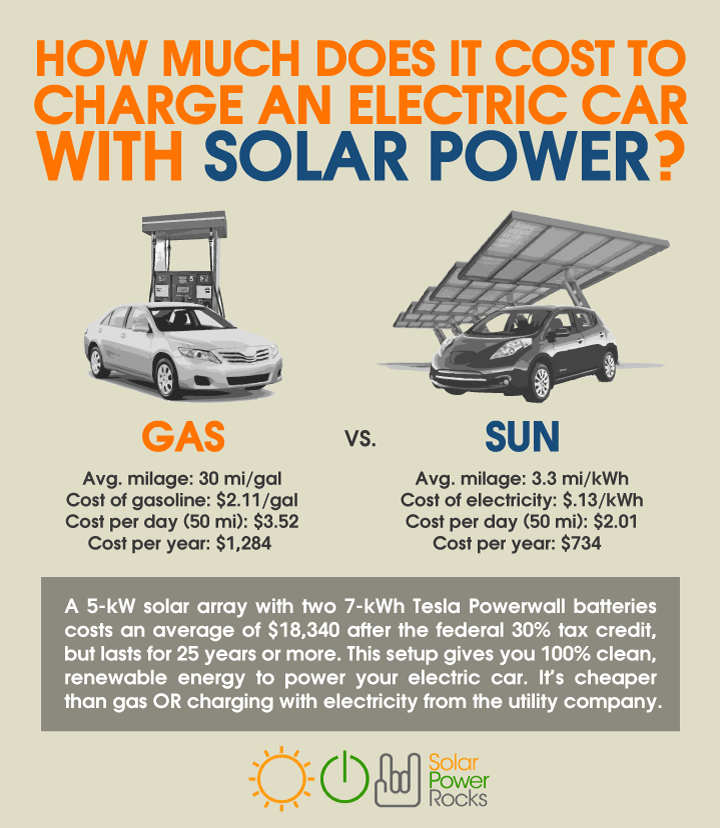
Some countries like Belgium, Poland, Portugal, Hungary, the Czech Republic and Luxembourg have outright banned their use.
Due to how we’ve established they work, tire studs are known to cause damage to road surfaces outside of the winter.
Because of the damage they can cause to roads, tire studs are illegal in some states and countries.
This comes down to where you drive your vehicle during the winter. If your regular commute involves icy roads, studded tires could be a better choice for you.
Regular winter tires, however, are enough for most people who only need to drive over snowy roads.
Apart from the aforementioned loss of traction on non-icy roads, studded tires are also noticeably noisier than winter tires.
An icy path is the one place where studded tires get a chance to really prove their worth, and this includes black ice.
They break through it to give the vehicle better grip and traction where the tire’s rubber would be inadequate.
Having an all-wheel-drive system could convince you that it’s enough year-round, but it’s better to be safe than sorry.
While AWD would provide more power than other systems, during more extreme conditions, traction would be harder to generate so winter or studded tires could come in handy.
Outside of these seasons, though, it’s probably a bad idea to keep the tires on the vehicle as the decreased traction puts a greater strain on the entire system.
When choosing studs for your tires, you should use a tire depth gauge to measure how much tread you have.
If you already know how to take readings from a gauge, finding the right stud size is as easy as getting one whose number corresponds to the first part of the reading.
For instance, if you find the tread depth to be 14/32″, go for a TSMI #11 size stud, if it’s 15/32″, go for a TSMI #15 stud and so on.![]()
Some winter tires can be studded but it’s possible to use them without installing the studs beforehand.
If you are looking to know more, you can also see our posts on what are tire socks, which tires do you put chains on, and how long do winter tires last.
Tire studs provide better grip and traction on icy roads during the winter and they also work on black ice.
However, they should be used with caution and you have to look carefully into them before making your choice.
They’re best suited for use on roads that have been impacted by harsh weather conditions but could potentially be dangerous on regular snow, wet roads or dry asphalt.
Removal and replacement are generally discouraged; you should have a dedicated set of tires for these seasons and you can expect to get four seasons’ worth of normal use before needing to get a new one.
90,000 services| Radius | R12 | R13 | R14 | R15 | R16 | R17 | R18 | R19 | R20 | R21 | R22 |
| Disassembly/Assembly | 50r | 100r | 100r | 135r | 135r | 145r | 180r | 215r | 230r | 230r | 300r |
| Balancing | 70r | 80r | 105r | 110r | 130r | 150r | 190r | 210r | 225r | 265r | 285r |
| Removal/Installation | 50r | 70r | 70r | 80r | 105r | 130r | 140r | 150r | 160r | 190r | 230r |
| Total 1 wheel | 170r | 250r | 275r | 325r | 370r | 425r | 510r | 575r | 615r | 685r | 815r |
| Total 4 wheels | 680r | 1000r | 1100r | 1300r | 1480r | 1700r | 2040r | 2300r | 2460r | 2740r | 3260r |
| Radius | R16 | R17 | R18 | R19 | R20 | R21 | R22 |
| Disassembly/Assembly | 230r | 240r | 280r | 320r | 330r | 330r | 400r |
| Balancing | 130r | 150r | 190r | 210r | 225r | 265r | 285r |
| Removal/Installation | 105r | 130r | 140r | 150r | 160r | 190r | 230r |
| Total 1 wheel | 465r | 520r | 610r | 680r | 715r | 785r | 915r |
| Total 4 wheels | 1860r | 2080p | 2440r | 2720r | 2860r | 3140r | 3660r |
| Radius | R16 SUV | R17 SUV | R18 SUV | R19 SUV | R20 SUV | R21 SUV | R22 SUV |
| Disassembly/Assembly | 230r | 240r | 280r | 320r | 330r | 330r | 400r |
| Balancing | 145r | 170r | 185r | 225r | 245r | 285r | 325r |
| Removal/Installation | 115r | 160r | 170r | 190r | 180r | 220r | 260r |
| Total 1 wheel | 490r | 570r | 635r | 735r | 755r | 835r | 985r |
| Total 4 wheels | 1960r | 2280r | 2540r | 2940r | 3020r | 3340r | 3940r |
| Radius | R15 NIVA | R16 NIVA | GAZELLE, FORD, PEUGEOT |
| Disassembly/Assembly | 135r | 135r | 170r |
| Balancing | 140r | 145r | 180r |
| Removal/Installation | 105r | 115r | 170r |
| Total 1 wheel | 380r | 395r | 520r |
| Total 4 wheels | 1520r | 1580r | 2080p |
| R22 22 | R13 | R14 | R15 | R16 | R17 | R18 | R19 | R20 | R21 | R22 |
| 30r | 30r | 30r | 40r | 40r | 40r | 50r | 50r | 50r | 60r | 60r |
We follow the rules of tire storage and guarantee that your tires will serve you as long as possible!
Attention! Tires are accepted for storage only in a clean condition.
Find out by phone: 8(8452)599-123 and 599-300
You can make an appointment for tire fitting online and leave the wheels for seasonal storage at the nearest van auto center convenient for you
You can use the service in the service centers:
Seasonal storage of tires in the warehouses of the van auto company is carried out in two ways: on disks (storage of wheels as a whole) and without them. In the first case, tires are stored in a stack up to 4 pieces high, in the second case they are placed in a row on the tread. Other storage methods, in order to avoid tire deformation, are not allowed.
In the first case, tires are stored in a stack up to 4 pieces high, in the second case they are placed in a row on the tread. Other storage methods, in order to avoid tire deformation, are not allowed.
Tires are stored in accordance with GOST R 54266-2010 “Pneumatic tires. Packing, transportation and storage.
The issuance of tires is made in the presence of an agreement and an act of acceptance and transfer, certifying the fact of the delivery of tires for storage. If the contract or act is lost, it can be restored in advance if you have a passport.
You can pick up your set of wheels at any time without waiting for the end of the storage period.
When the wheel change season comes, sign up for a tire service, indicating that your set of wheels is in seasonal storage. On your chosen center, day and hour, your set of wheels will be waiting for you to install on your car.
We are always ready to give your unused tires a temporary shelter, while carefully preserving their current condition until the next season.
Call: 8(8452)599-123 and 599-300
Enjoy driving your car, and entrust seasonal wheel storage to professionals!
Winter tires - catalog with prices.
Car tires must provide sufficient traction in all conditions. This is a mandatory requirement. Winter tires are often equipped with studs to improve traction on slippery surfaces. Sometimes drivers make do-it-yourself tire studding or restoration of lost studs. Let's analyze this process in more detail.
In fact, tire studding is a simple process, which consists in installing studs into the tire with your own hands. At the same time, the tire can be new or used. You need to understand that to perform such work, you need a certain qualification, an understanding of the principles of installing a spike in rubber.
Tires are often re-studded. Such work makes it possible to significantly extend the life of studded tires. It is also an opportunity to save on tires when buying, by buying simple tires and studding them yourself, you can get good winter tires.
Such work makes it possible to significantly extend the life of studded tires. It is also an opportunity to save on tires when buying, by buying simple tires and studding them yourself, you can get good winter tires.
Some manufacturers sell tires without studs, offering drivers to stud them themselves. This procedure can be entrusted to the specialists of the store, or performed by yourself after purchase.
It should be understood that not all tires can be studded. Summer and all-season tires are not suitable for such refinement. Winter tires with a European tread pattern are also usually not suitable for stud placement.
In addition, be sure to inspect the condition of the rubber on used tires. If there is visible wear, cracks in the material should not be restored. Be sure to specify the date of manufacture, if the tire was made earlier than five years ago, it is also better not to touch it.
The best option would be to choose tires suitable for such work.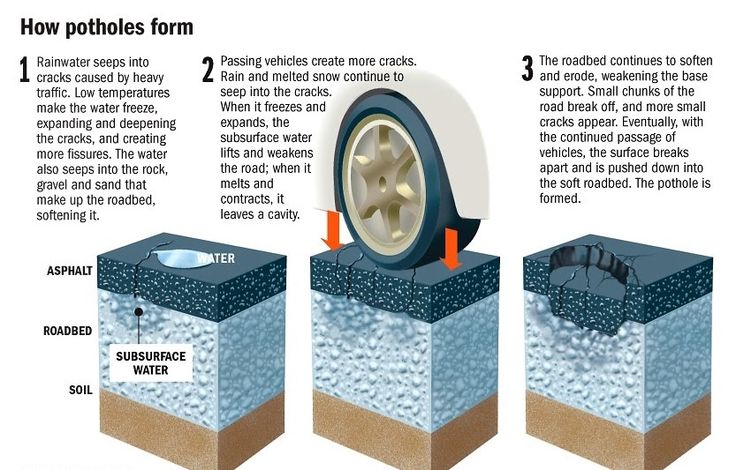 Some manufacturers initially prepare Scandinavian tires for revision. They have recesses for placing spikes. If possible, these tires should be purchased.
Some manufacturers initially prepare Scandinavian tires for revision. They have recesses for placing spikes. If possible, these tires should be purchased.
You can use any other rubber. It must meet the following requirements:
These are the basic requirements for tires for additional studding.
When choosing a tire for studding, you need to look at the residual pattern. According to the requirements of technical regulations, winter tires must have a tread depth of at least 4 mm. This is a mandatory requirement for any winter tire.
The minimum number of spikes is not really regulated. The calculation is based on the initial number of parts. It is believed that operation stops at 60% of the lost spikes. This information can only help in determining the timing of re-studding.
More interesting is the question of the maximum number of spikes.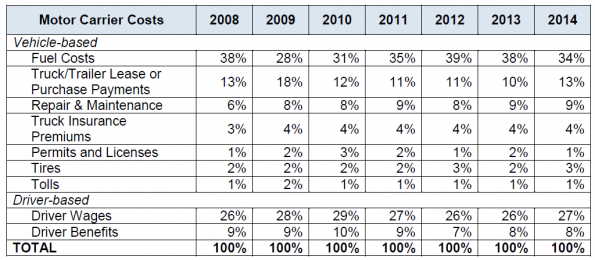 Here you need to understand - an increased number of elements increases the noise level during movement. At the same time, the efficiency of the tire does not increase much. It is worth focusing on the following maximum indicators:
Here you need to understand - an increased number of elements increases the noise level during movement. At the same time, the efficiency of the tire does not increase much. It is worth focusing on the following maximum indicators:
These are European standards. In Russia, these standards are not spelled out anywhere.
The studding of winter tires begins with the choice of studs. They come in different forms. We list the main options.
First look at the shape of the flange. There are the following types.
The next step is form.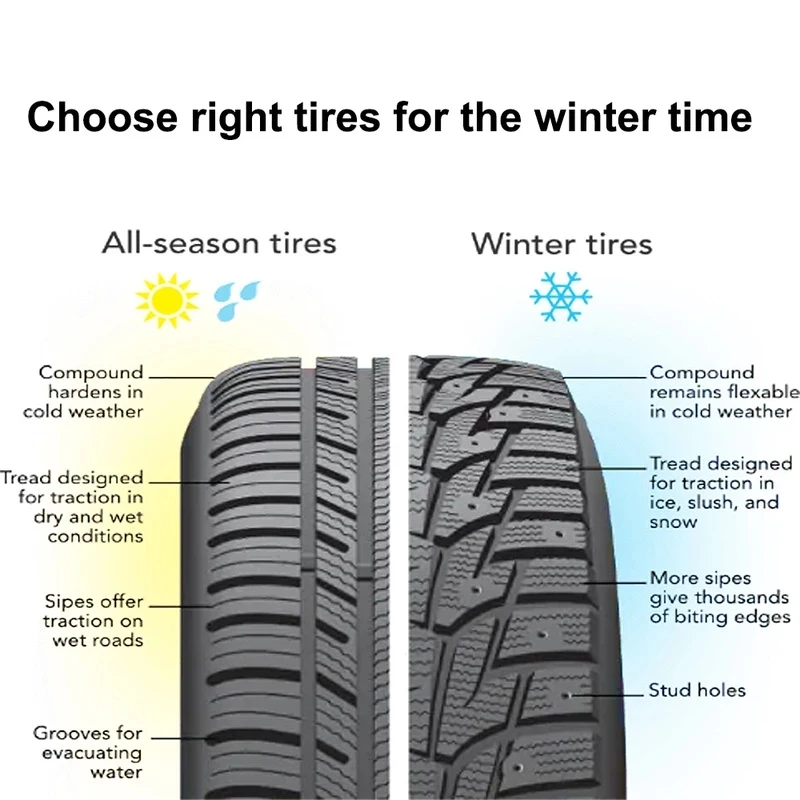 Now there are many varieties, but if they all give an advantage, then only for the first time after installation. They cost more. It is recommended to use simple round spikes.
Now there are many varieties, but if they all give an advantage, then only for the first time after installation. They cost more. It is recommended to use simple round spikes.
At the moment, two-piece spikes are used. The outer part is made of aluminum. The core is steel or tungsten.
Let us consider in more detail what the shape of the spikes is. If a replacement is made, then it is worth choosing a part similar to that used.
The following types of spikes are distinguished by shape.
 They have a special pad that allows you to drive almost silently on asphalt.
They have a special pad that allows you to drive almost silently on asphalt. When studding from scratch, it is better to use round spikes, they are inexpensive.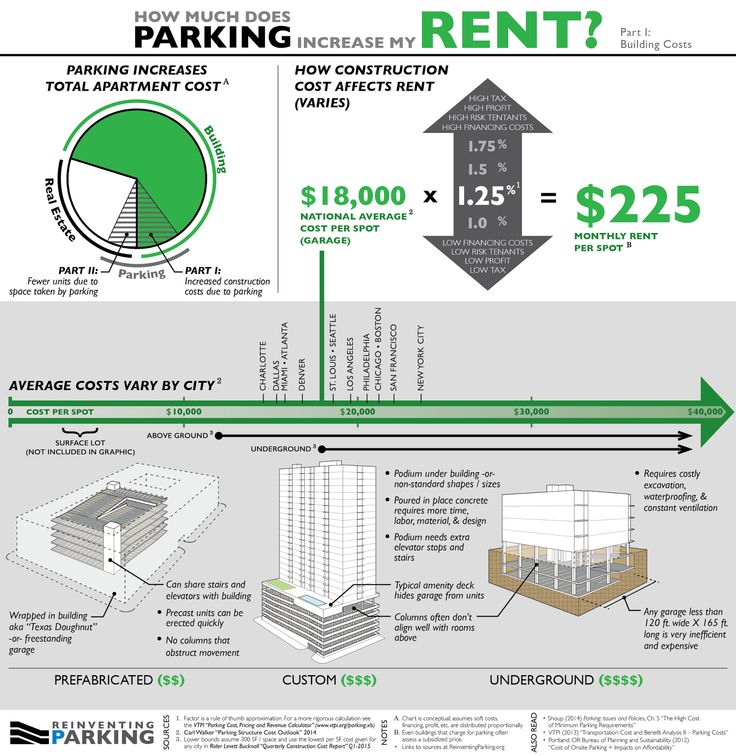 The round spike is not erased too quickly.
The round spike is not erased too quickly.
It is important to prepare the tire for studding. It is better to do the work in advance. It is advisable that the tire rest for 2-3 months before use. In the process, remember the following rules.
Start by removing the old spikes. You can pull out the spikes with a screwdriver or pliers. All remaining holes are purged from dirt. Be sure to measure the depth of the holes. It is advisable to do this before buying spikes, then you can definitely choose the size.
During operation, the tire must be firmly fixed. Any movement can lead to spike placement errors. If the tire was not originally intended for studding, you need to make holes with a drill, use a drill with a depth gauge.
Do not place spikes in sockets that have been used before.
Repairs can be made without a gun. This is easy to do, but you need to be careful. Before work, moisten the surface with soapy water.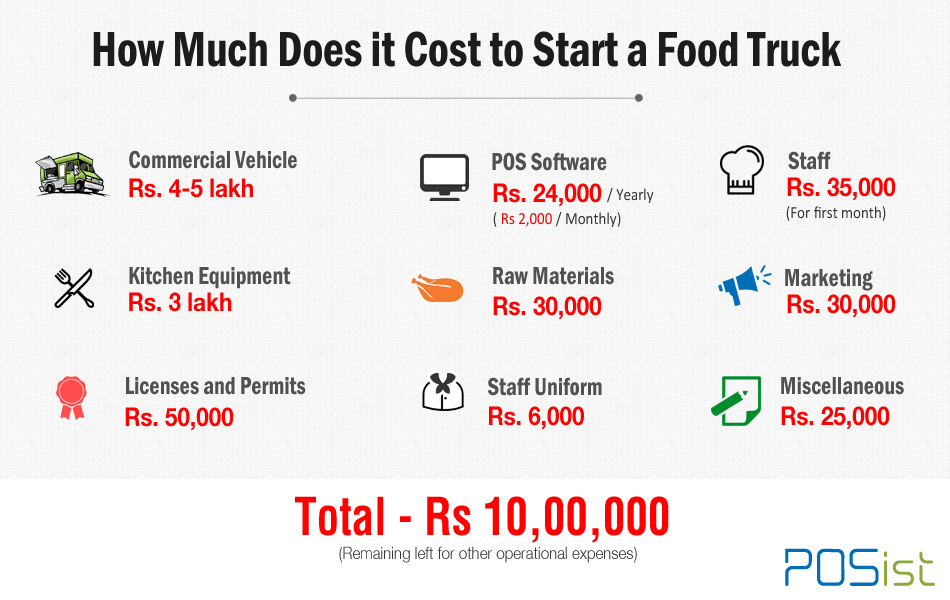
The method consists in driving the spike into place with a hammer. This must be done carefully so as not to damage the core.
If possible, it is better to use a stud gun. This equipment will allow you to place the spikes in the tread blocks much more accurately.
The work is extremely simple. We fall asleep spikes in the pneumatic gun. We insert the legs of the fixture into the hole and hammer the part into place. The main thing is to make sure that the gun is vertical.
Self-studding tires is not a difficult task. Even a novice car enthusiast can cope with it. Knowing how the work is done, you can save on preparing the car for the winter season.
How to restore studs on car winter tires. Is it worth re-studding or buying new tires. Personal experience. How to do it yourself.
To restore the grip properties of studded tires, the following techniques are used:
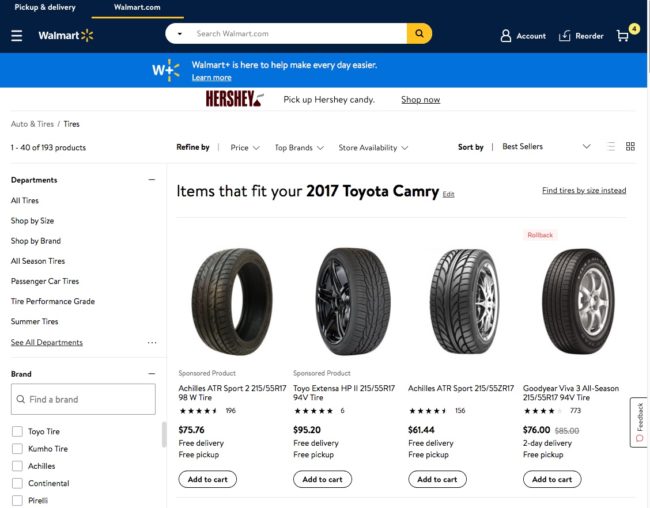 Requires the selection of exactly the same ones that were used earlier.
Requires the selection of exactly the same ones that were used earlier. If the tires of the car are not worn out, and the attachment points of the old studs are in good condition, it will be cheaper to fix it by giving it for repair studding. With strong wear and tear, it would be wiser to purchase a new “rubber” and “change shoes” on the car.
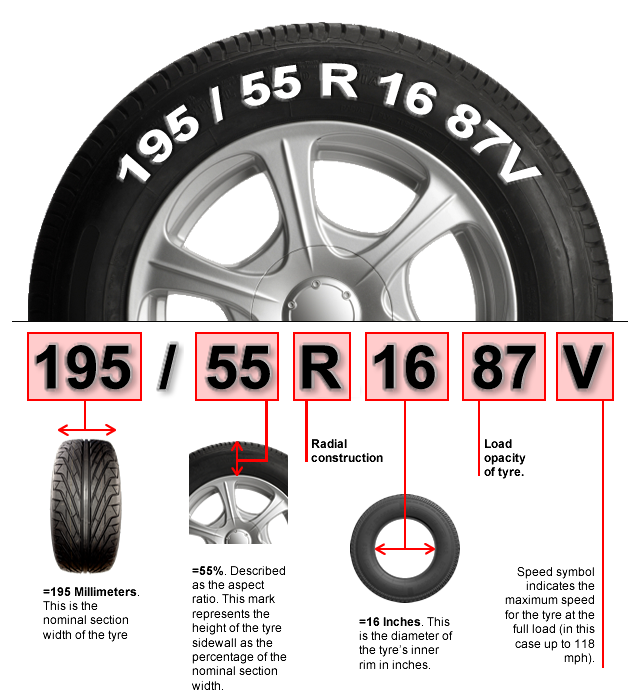 Nearby installed spikes are already mounted in a softer material.
Nearby installed spikes are already mounted in a softer material. An experienced craftsman will select the right option, taking into account the level of tread wear. If more than half is lost, then the grip on the asphalt on the ice becomes unreliable, the car can slip.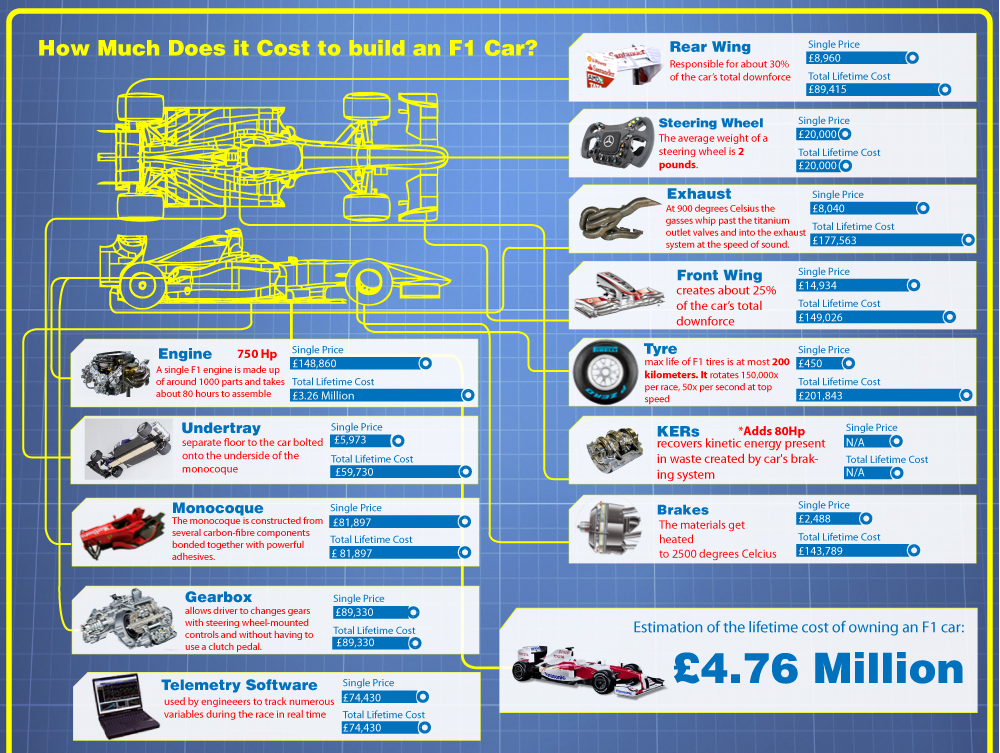 You can perform studding at almost any tire fitting, where there is the appropriate equipment.
You can perform studding at almost any tire fitting, where there is the appropriate equipment.
It is believed that for the normal operation of studded tires (new or retreaded) a break-in of at least 1000 km of run is necessary. The first 300 - 500 km should be driven more carefully than usual. Do not make sudden accelerations, brake sharply or drift. To avoid uneven abrasion of tires, you need to check the camber - convergence, balance the wheels of the car.
The result largely depends on what kind of spikes the work is being done. The cost is the following - 17 ₽ per spike, and there are from 90 to 160 of them in one tire. Some workshops offer 8-12 ₽ for installing a repair spike. Installation work can cost 180 - 400 rubles for one winter tire. Depends on how many spikes are lost.
Installation work can cost 180 - 400 rubles for one winter tire. Depends on how many spikes are lost.
The first time I had a chance to carry out this procedure at the master, who put new spikes in the old nests and also used smaller nails than they used to be. In fact, only the spikes installed on the central part of the tire worked, where the tread had worn out over two winter seasons. In the side surfaces, the spikes simply sank, so they did not play any role in gripping the asphalt.
The second time this error did not occur. The master used high quality repair spikes, so the result was no worse than with new tires.
Personally, I can add a wish to find a good specialist and carefully monitor which spikes he will use. Then the result of the work will not disappoint. Replacing lost studs is cheaper than buying new winter tires, which, for example, for crossovers cost up to 16,000 apiece.